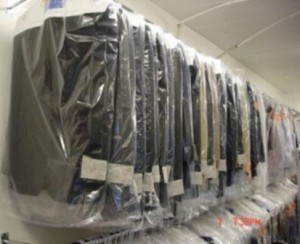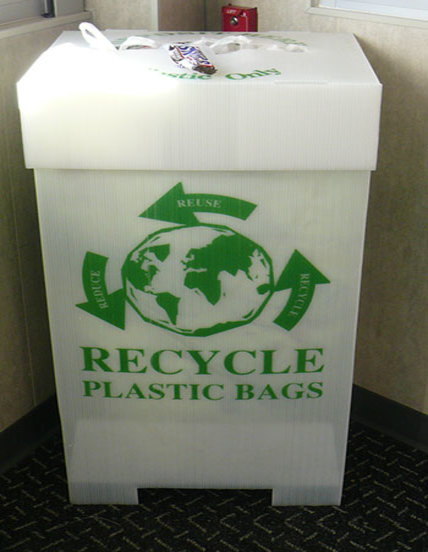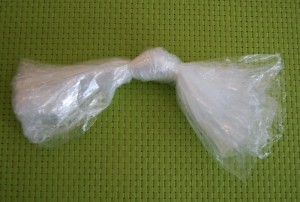By Ebube Okechukwu
Over the past couple of weeks, we have shared information on several recyclable materials that are not commonly known via our social media platforms. Another material that falls in this category is plastic dry cleaning bags.
 Recyclable dry cleaning bags in a row
Recyclable dry cleaning bags in a row
Every time you go to the dry cleaners, your clothes come back to you wrapped in a huge swath of plastic. And, if you are a dedicated recycler or environmentalist, that probably bothers you a little. What are you supposed to do with that plastic sheet once your clothes arrive home?
There’s good news! Most plastic dry cleaning bags are recyclable. Now that you have some basic knowledge of these plastic clothes coverings, let’s look at some more detailed information about these bags.
What are dry cleaning bags made of?
Dry cleaning bags are made with low-density polyethylene, commonly abbreviated as LDPE. This particular type of thin, clear plastic is known as “film” to those in the know in the recycling industry.
Low-density polyethylene (or LDPE) is used for many other types of film, including plastic shopping bags and trash bags.
Why should I recycle dry cleaning bags?
Dry cleaning bags, like anything else made from plastic, are not biodegradable. That means they will sit in landfills – forever. With the ever-increasing demand for dry cleaning around the world, even these small bags add up to be detrimental to Mother Earth.
There are many other reasons to keep dry cleaning bags out of your garbage can. Plastic is a petroleum-based product so recycling dry cleaning bags actually reduces petroleum use. The bags also contain numerous toxic chemicals, including dioxins, which are released into the air if the plastic is incinerated.
Additionally, dry cleaning bags and other types of film plastic are a real nuisance in the waste stream. The wind catches them easily, so they have a tendency to escape trashcans or piles and create litter on highways and in transfer stations. Film plastic can get caught in recycling machinery, which damages equipment and stalls operations at recycling centers. If that plastic finds its way into the ocean, marine life and birds can eat it, mistaking the bag for food, or get tangled in the folds of the plastic. Finding ways to responsibly recycle the film is beneficial for both the environment and recycling companies.
Recycled dry cleaning bags can be found in furniture, tiles, garbage bags, trashcans, and much more. Recycling plastics uses substantially less energy and produces far fewer environmental toxins then creating new plastic altogether, so it is important to spread the word that dry cleaning bags and other plastic films can be recycled.
As a last reminder, remember that before placing dry-cleaning bags in any type of recycling bin, make sure you have removed all other potential contaminants, including hangers and receipts. Happy recycling!
Culled from:
Bennett, Sophia. “How to Recycle Dry-Cleaning Bags.” Recycle Nation. November 18, 2014. Accessed July 27, 2015. http://recyclenation.com/2014/11/recycle-dry-cleaning-bags
Giller, Chip, and Catharine Wroth. “7 items you didn’t know you could recycle.” Today.com. November 6, 2007. Accessed July 28, 2015. http://www.today.com/id/21642033/ns/today-green/t/items-you-didnt-know-you-could-recycle
Iggyaa, “How to Recycle Plastic Bags, Dry Cleaning Bags, Shrink Wrap.” GreenLifeStyleChanges.com. December 27, 2011. Accessed July 28, 2015. http://www.greenlifestylechanges.com/how-to-recycle-plastic-bags-dry-cleaning-bags-shrink-wrap/



